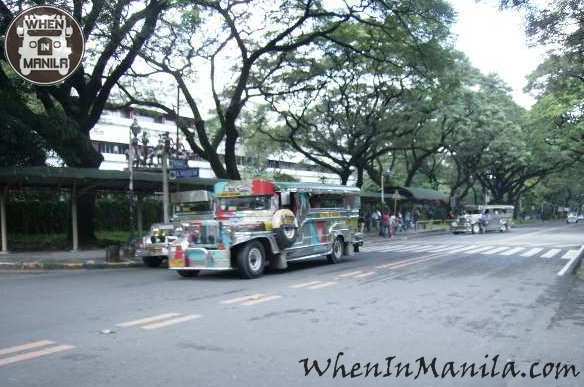Even UP Diliman, known as a microcosm of the Filipino society, is known for the Jeepney, more particularly the IKOT and TOKI
The Jeepney has always been one of the very distinct icons when it comes to Filipino culture. It is something that cannot be found in other places. In fact, it is often pointed out as one of the many things Filipinos miss about the Philippines when they go abroad, as the lyrics of the Side A’s song “Manila” goes:
Hinahanap-hanap kita Manila
Ang ingay mong kay sarap sa tenga
Mga Jeepney mong nagliliparan
Mga babae mong naggagandahan
Take me back in your arms Manila
And promise me you’ll never let go
Promise me you’ll never let go.
Truly, there is already an established attachment between the jeepney, our favorite mode of transportation, and us, Filipinos. No surprise, it has also become a mirror that reflects our culture, whether consciously or unconsciously.
From borrowing to making it our own
Lessons on Post colonialist theories never fail to highlight how Filipinos are always capable of colonizing things that are from the colonial masters. English is one of the best examples, a language that is widely used in the country and something it is also known for (the call center industry, for instance). Like the language, jeepney is also a good manifestation of Filipinos’ ability of owning something that was originally borrowed from the ones who once colonized the country. This is very apparent when we try to look at the origin of the Philippine jeepney.
Originally from Japan, our jeepney was actually the World War II Willy’s jeep. It was a topless surplus that was transformed into a kind of “shared taxi” until it finally had its roof and even stretched to accommodate more passengers. [1]
But to think of it, it surely took a large amount of creativity for Filipinos to transform this formerly foreign object which was a surplus or a kind of scrap into something world class now. In fact, our jeepneys today are also known for their designs which also reflect Filipinos’ creativity and artistry. In fact, it is very common for jeepneys to be in bright colors and even bear designs that are truly Filipino and even world class.
Ladies first
During rush hours when everyone simply wants to go home no matter what, men known as sabit become a very typical part of the picture. Since it is an SOP in the Philippine culture to prioritize women in public transportation, these men usually make way for the females and end up clinging outside or sitting on the eskribo or even on the roof.
Tuloy po kayo!
Sometimes, men cling outside thinking that the jeep is already full. Yet when there is still an available space inside the vehicle, people would usually convince the men outside to come in and have a seat, a reflection of Filipinos’ hospitality.
Don’t forget about “po” and “opo”
When somebody shouts “bayad nga!” to the driver as he passes his fare to him, other would usually find that person rude and disrespectful, same with “para nga!” when telling the driver to stop so one could get off. This is because in the Philippines, it is not advisable not to use “po” and “opo” most especially when dealing with people who are older than you, even if you do now know them.
God bless our trip
Filipinos are known for their strong faith. Apart from exhibiting this fact through practices in church and even in different traditions most especially those of the Catholics, this high regard to the Divine is also manifested in jeepneys.
Besides the common gesture of the passengers to do the sign of the cross as the jeepney starts to move, many drivers also prefer having mini-altars on their dashboards where people could find small images of the saints, a cross, sampaguita, and a rosary. God bless our trip is also printed on a lot of jeepneys all around the country.
Be good to others
Pakikipagkapwa-tao or being good to fellow and treating them right is something every jeepney passenger should keep in mind. When someone is passing his fare to the driver, others should cooperate in the passing so it could reach its proper destination. Being too loud in the jeepney is also not advisable so as not to disturb other passengers who might want to take a nap during the ride. When the jeepney is almost full, it is always good to sit properly and avoid spreading your legs so as to give more space to the passenger who is just about to sit.
Close tayo
They say all is fair inside the jeepney. Regardless of your economic status, once you ride a jeepney, expect to be treated like everyone else (if you want to have a VIP treatment, better take the cab, goes the common belief of jeepney passengers) which is why it is no surprise that it is easy to make friends inside the jeepney.
Sometimes, a subconscious remark of one passenger on a national issue could lead to a very meaty discussion among everyone and soon, they would begin talking about themselves and what they do which, unsurprisingly, could lead into friendship; thanks to the friendliness of the Filipinos that they bring even as they ride on jeepneys.
Note:
[1] “Jeepney.” stuartxchange.org <https://www.stuartxchange.org/Jeepney.html>





